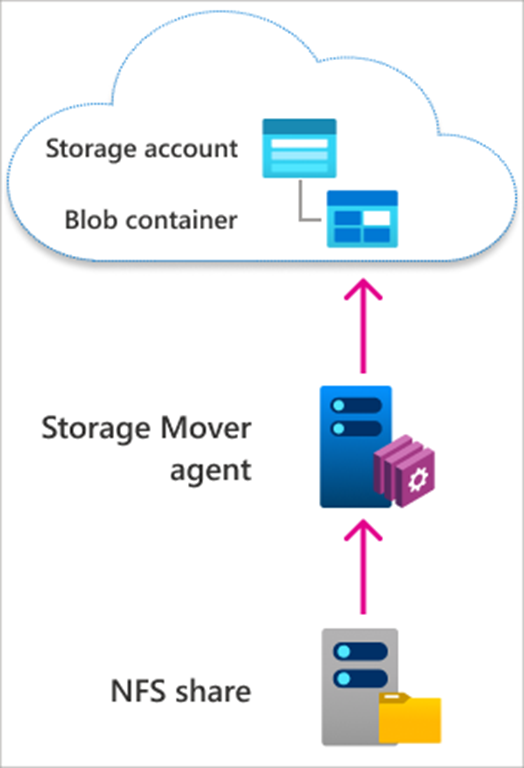
MMS • Steef-Jan Wiggers
Microsoft recently announced the preview of Azure Storage Mover, a fully managed, hybrid migration service.
Azure Storage Mover is a tool that helps users migrate data from on-premises storage to Azure Storage. This tool is particularly useful for users with large amounts of data that they want to move to the cloud efficiently and cost-effectively. With the preview release, the company specifically targets the migration of an on-premises network file system (NFS) share to an Azure blob container.
Azure Storage Mover is a hybrid service with migration agents that users can deploy close to their source storage. All agents can be managed from the same place in Azure, even if they are deployed across the globe. Furthermore, with the service, users can express their migration plan in Azure, and when they are ready, conveniently start and track migrations right from the Azure portal, PowerShell, or CLI.
Under the hood, Azure Storage Mover is backed by a replication engine and is best suited for fast and accurate migration scenarios. Users could choose it for short-term or occasional uses where users do not need to keep two locations in sync at any given time.
A spokesperson from Microsoft explained to InfoQ:
For example, the migration of an application workload and the associated data into the cloud can keep the source (on-premises) in sync with changes in the destination (in the cloud). It evaluates the source and target when a migration job starts, and only the differences are copied according to migration settings. The ability to accumulate data in the cloud towards one target with data ingested from different sources enables Azure Storage Mover users to restructure their cloud solution storage designs. Lastly, Azure Storage Mover can flexibly change settings according to migration needs.
In addition, the spokesperson provided some general scenarios for Azure Storage Mover, such as:
- Migrating content from a source to a target storage location in Azure. These migrations require careful planning. Users can express their migration plans, share project structures that may vary per workload, review their migration plans in Azure Storage Mover, and track migration jobs.
- In an offline bulk data ingestion, Azure Storage Mover can be used to catch up with changes that have happened since initiating the copying process to Data Box.
- Shipments of data. Azure Storage Mover is well suited for scenarios where customers generate or receive large amounts of data on-premises and need to add this new data to an existing repository in Azure. A customer can use an existing source-target plan and integrate triggers and timers to start a new migration job.
The migration service differs from other products in Microsoft’s portfolio. For instance, a solution such as Azure File sync is backed by a synchronization engine and is better suited for long-term uses where users might need to keep two locations always in sync. For example, a hybrid file server scenario might require both the copy in the cloud and the copy on the server in an office location to be kept in sync. If a file or folder changes in one location, those changes are tracked, and only the change is transported to the other location.
And finally, the Microsoft spokesperson stated:
Microsoft meets customers wherever they are in their cloud journey. Across the planning and migration phases, Azure Storage Mover provides customers with capabilities enabling seamless and confident migrations of their most complex data estates to Azure.
More details on the service are available on the documentation landing page.
